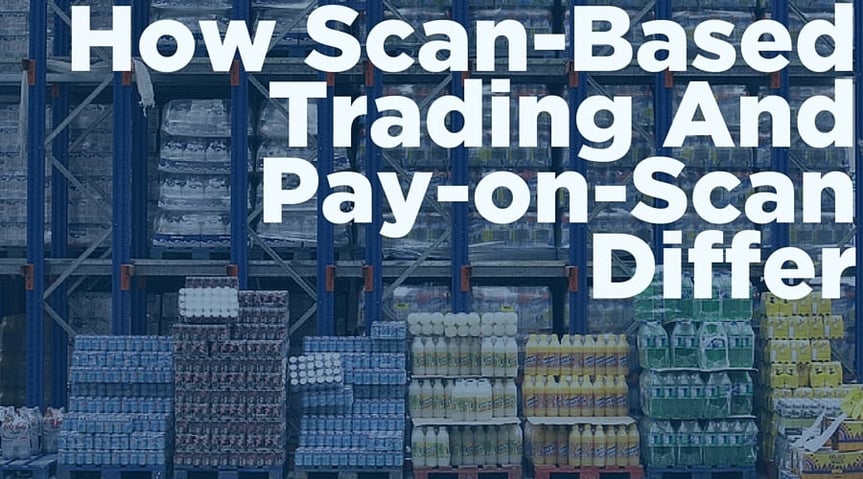If you're new to understanding scan-based trading, you’ve come to the right place.
Scan-based trading means a supplier owns your inventory in a warehouse or store until scanned at a point of sale. It's a technology many retailers prefer because it helps save them money instead of having to purchase products.
However, there can sometimes be confusion about the difference between pay-on-scan and scan-based trading. That’s because pay-on-scan is similar to a consignment system. Suppliers provide more inventory to stores so retailers don't ever run out of stock. Then the supplier gets paid when the items sell throughout a period of time.

Scan-Based Trading & Pay-On-Scan Features
The similarities between the two are in the supplier keeping ownership of the goods until they're sold. Other similarities come in when we're talking about how important data synchronization is to make both processes work. When you decide to use scan-based trading, communication between you and the supplier is essential to eliminate discrepancies and excessive downtime. So how do you accomplish this with scan-based trading and pay-on scan procedures? Take a look at the features you'll need by using right management software.
E-Invoice Processing
When you use scan-based trading, you'll need a better connection with your suppliers to pay them when their products sell in your store. If you're still using paper invoices for payment, you are likely fighting off constant errors from the data entry department.
Having discrepancies in what you pay to your suppliers only leads to internal blame games that bring a lack of morale and more downtime. E-invoicing is the answer to this, along with using the proper management software. It's no different with pay-on-scan procedures where complete accuracy prevents your supplier from having to contact you about mistakes.
Through automation, orders get automatically placed into an e-invoice system without having to worry about manual entry.
Better Visibility On Inventory
You need to keep up on how much inventory you need, whether using scan-based trading or pay-on-scan. Without centralized management, your supplier won't know how much inventory you need at a given time to keep up with demand. This is important for either scan method since confusion can lead to a supplier not sending you enough products. Or, you may end up with too much inventory you can't use.
With UPC levels updated daily through automation, both you and the supplier can keep up with inventory levels at each store location. Both of you having transparency will save time from fixing problems that could bring more confusion from different departments
Improved Shrink Management
Keeping on top of inventory that's been stolen or damaged is equally vital to maintain efficient scan-based trading and pay-on-scan procedures. Again, with more visibility into analytics and what's occurring in each store and warehouse, you'll never have a disconnect on what items need replacing.
Don't forget about shrink reconciliation and how important this is for accurate financial reports. Suppliers can get better shrink reconciliation when having more detailed information like driver and route information.
Enhanced Supply Chain Analytics
Analytics and reports are essential to keep scan-based trading and pay-on-scan procedures working optimally. You've probably discovered that managing inventory can be far more complex than you might have imagined. Part of this involves forecasting and planning for what kind of inventory and how much you'll be needing in the coming months.
Through analytic structures focusing on your sales trends, you can set up a plan to accommodate future demand. Since the supplier keeps ownership of your products until a sale, timing when you need your products during specific times of the year can save you even more money.
Having instant reports available also helps get everyone on the same page so suppliers can access data at all times through the cloud.
Contact us to learn more about scan-based trading, pay-on-scan, and how our software brings thorough visibility to help your inventory management.
Raise Sales & Profitability with SBT Software
Download our ebook and learn how scan-based trading software can enable you to raise your profit margins with ease.